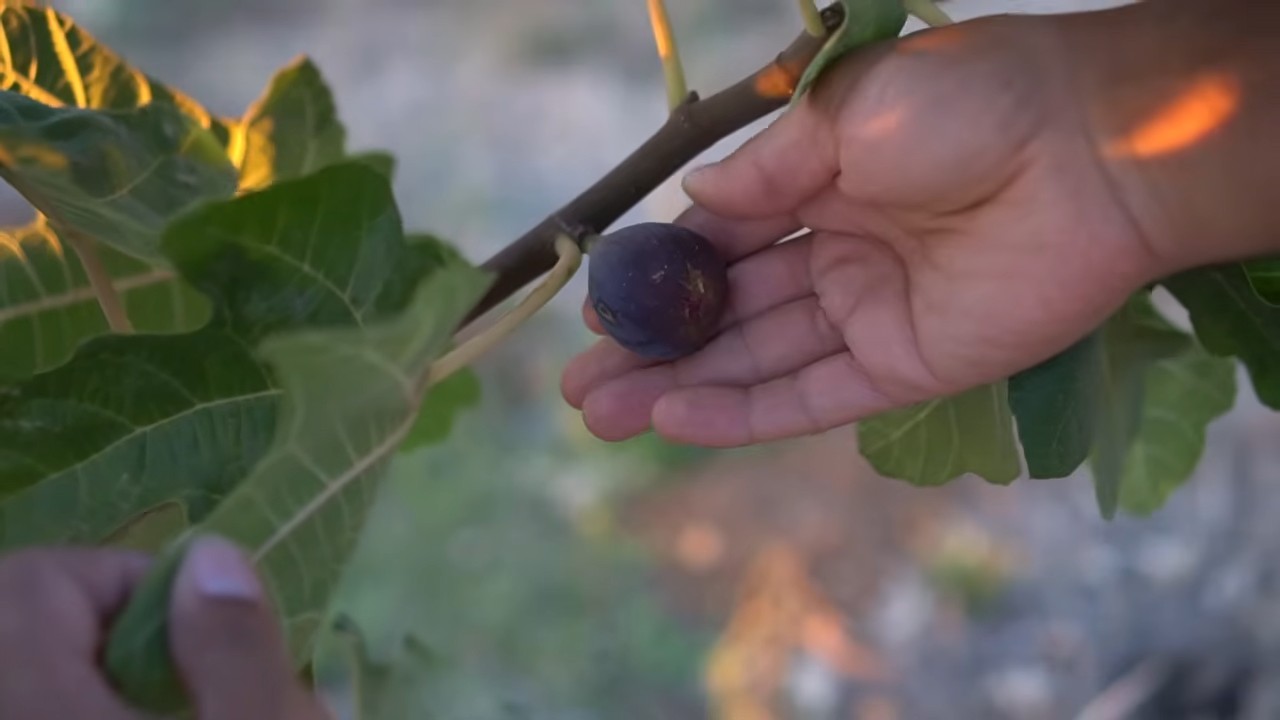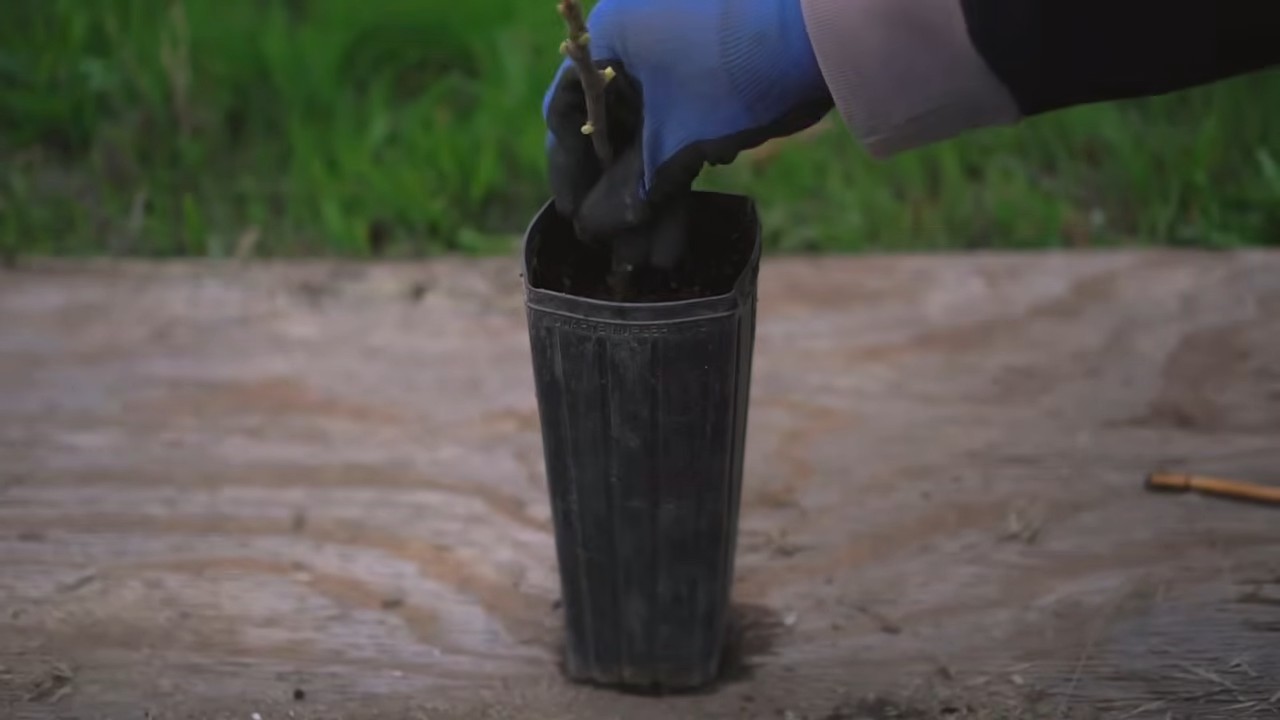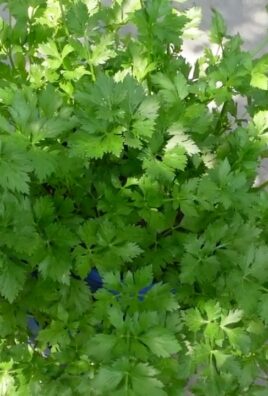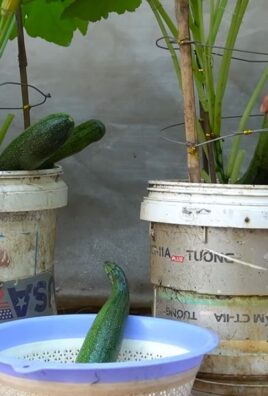Growing Figs Indoors might seem like a far-fetched dream, especially if you don’t live in a Mediterranean climate. But trust me, it’s totally achievable, and I’m here to show you how! For centuries, figs have been cherished, not just for their delicious taste but also for their symbolic significance in various cultures. From ancient Rome, where they were considered sacred, to modern-day kitchens, figs have always held a special place.
But why bother bringing this sun-loving fruit inside? Well, imagine plucking fresh, sweet figs right from your own indoor garden, even in the dead of winter! No more relying on expensive, often lackluster, store-bought options. Plus, growing figs indoors is a fantastic way to add a touch of greenery and a unique talking point to your home. This DIY guide will equip you with all the essential tricks and hacks to successfully cultivate these delightful fruits, regardless of your outdoor climate. I’ll walk you through everything from choosing the right variety to providing the perfect light and care, ensuring you enjoy a bountiful harvest of homegrown figs. Let’s get started!

Growing Figs Indoors: Your DIY Guide for a Bountiful Harvest
Hey plant friends! Have you always dreamed of harvesting juicy, sweet figs right from your own living room? Then you’ve come to the right place! I’ll show you how to successfully grow figs indoors, even if you don’t have a garden. It’s easier than you think, I promise!
What You Need: The Ingredients for Your Indoor Fig Garden
Before we get started, let’s make sure you have everything on hand. Here is a list of the most important things:
- Fig tree seedling: Choose a self-pollinating variety that is suitable for growing in pots. Popular options include ‘Brown Turkey’, ‘Celeste’, or ‘Little Miss Figgy’. These varieties are more compact and produce fruit even without pollination.
- Large pot: A pot with a diameter of at least 45 cm (18 inches) and good drainage is ideal. Fig trees like it when their roots have space.
- High-quality potting soil: Use a well-draining potting soil that is rich in organic matter. A mixture of potting soil, compost, and perlite is perfect.
- Fertilizer: A balanced, water-soluble fertilizer (e.g., 20-20-20) is important to supply your fig tree with the necessary nutrients.
- Water sprayer: Fig trees love high humidity, especially in winter.
- Grow light (optional): If your location doesn’t offer enough sunlight, a grow light can help.
- Pruning shears: For pruning and maintaining your fig tree.
- Drainage material: Expanded clay pebbles or gravel for the bottom of the pot to prevent waterlogging.
Step-by-Step Guide: How to Plant Your Fig Tree
Now let’s get down to it! Follow these steps to successfully plant your fig tree:
- Prepare the pot: Start by adding a layer of drainage material (expanded clay pebbles or gravel) to the bottom of the pot. This ensures good drainage and prevents waterlogging, which fig trees really dislike.
- Fill with soil: Fill the pot with the potting soil mix. Leave about 5 cm (2 inches) of space at the top.
- Plant the fig tree: Carefully remove the fig tree from its original pot. Loosen the roots a bit before placing it in the new pot. Make sure the root ball is about 2-3 cm (1 inch) below the rim of the pot.
- Fill with more soil: Fill the pot with more soil and press it down lightly.
- Water: Water the fig tree thoroughly until water runs out of the drainage holes. This helps to settle the soil and moisten the roots.
The Right Care: How to Keep Your Fig Tree Happy
A fig tree is like a small pet – it needs attention and care to thrive. Here are my best tips:
Location and Light
- Sunshine is key: Fig trees love sunlight! Place your fig tree in a spot where it gets at least 6-8 hours of direct sunlight per day. A south-facing window is ideal.
- Grow light as an alternative: If you don’t have enough sunlight, use a grow light. It can compensate for the lack of natural light.
Watering
- Regularly, but not too much: Water your fig tree regularly, but let the soil dry out slightly between waterings. Overwatering can lead to root rot.
- Finger test: Stick your finger about 2-3 cm (1 inch) deep into the soil. If it feels dry, it’s time to water.
- Less in winter: In winter, when the tree is dormant, reduce the amount of water.
Humidity
- They love humidity: Fig trees like high humidity. Spray the leaves regularly with water, especially in winter when the heating air is dry.
- Humidifier: A humidifier near the tree can also help to increase humidity.
- Pebble tray: Place the pot on a tray filled with moist pebbles. The evaporating water increases the humidity around the tree.
Fertilizing
- Fertilize regularly: During the growing season (spring and summer), fertilize your fig tree every two weeks with a balanced, water-soluble fertilizer.
- Less in winter: In winter, reduce or stop fertilizing altogether.
- Organic fertilizers: You can also use organic fertilizers like compost tea or fish emulsion.
Pruning
- Shape and health: Prune your fig tree regularly to maintain its shape and remove dead or diseased branches.
- Spring is the best time: The best time to prune is in late winter or early spring, before the tree starts to produce new growth.
- Encourage fruiting: Prune back long, thin shoots to promote fruit production.
Overwintering
- Dormancy period: Fig trees need a dormant period in winter. Place the tree in a cool, bright location (e.g., an unheated room or a garage) with temperatures between 0 and 10 degrees Celsius (32-50°F).
- Water less: Reduce the amount of water during the dormant period.
- Leaf drop: Don’t panic if your fig tree loses its leaves in winter. This is normal.
Common Problems and Solutions
Problems can also arise when growing fig trees indoors. Here are some of the most common issues and how to solve them:
- Leaf drop: Leaf drop can be caused by various factors, such as too little light, too much or too little water, or sudden temperature changes. Make sure your tree gets enough light, water it correctly, and avoid sudden temperature shifts.
- Pests: Fig trees can be infested by pests like spider mites, mealybugs, or aphids. Check your tree regularly for pests and treat it with an insecticide or insecticidal soap if necessary.
- No fruit: If your fig tree is not producing fruit, it could be due to too little light, not enough fertilizer, or a lack of pollination. Make sure your tree gets enough light, fertilize it regularly, and hand-pollinate the flowers if necessary.
- Root rot: Root rot is caused by overwatering. Make sure your pot has good drainage and don’t water your tree too often.
Harvest Time: The Reward for Your Hard Work
After all the effort and care, it’s finally time to harvest the fruits of your labor!
- Recognizing ripeness: Figs are ripe when they are soft and come off the tree easily. The color of the figs depends on the variety.
- Harvest gently: Gently pick the ripe figs from the tree.
- Enjoy: Enjoy your homegrown figs fresh from the tree or use them in your favorite recipes.
Additional Tips and Tricks
Clean the leaves: Clean the leaves regularly with a damp cloth to remove dust and promote photosynthesis.
Rotate the pot regularly: Rotate the pot regularly so that all sides of the tree get even light.

Conclusion
So, there you have it! Growing figs indoors might seem like a daunting task at first, but with the right knowledge and a little dedication, you can absolutely enjoy the sweet taste of homegrown figs right from the comfort of your own home. This DIY approach to indoor fig cultivation isn’t just about saving money; it’s about connecting with nature, understanding the growth cycle of a plant, and experiencing the immense satisfaction of nurturing something from a small sapling to a fruit-bearing beauty.
Why is this DIY trick a must-try? Because it empowers you to control the environment your fig tree thrives in. You can adjust the light, humidity, and temperature to mimic the ideal Mediterranean climate that figs crave. No more relying on unpredictable weather patterns or worrying about pests that might plague outdoor trees. Plus, imagine the bragging rights you’ll have when you serve guests figs you grew yourself!
But the beauty of this DIY project lies in its adaptability. Feel free to experiment with different fig varieties to find your personal favorite. Brown Turkey figs are a popular choice for beginners due to their resilience and productivity, but don’t be afraid to branch out and try Black Mission, Celeste, or even the unique Fiddle Leaf Fig (though it’s primarily ornamental, its striking foliage adds a touch of the exotic to any indoor space).
Consider using different potting mixes to see what works best for your specific environment. A well-draining mix is crucial, but you can adjust the ratios of peat moss, perlite, and vermiculite to optimize moisture retention and aeration. You can also explore different training techniques to shape your fig tree and maximize fruit production. Espalier training, for example, can be a great way to grow a fig tree against a wall or trellis, saving space and adding a decorative element to your home.
Don’t be afraid to get creative with your indoor fig garden! You can even incorporate companion plants like herbs or flowers to attract pollinators and deter pests. Just be sure to choose plants that have similar light and watering requirements.
We wholeheartedly encourage you to give this DIY trick a try. The rewards are well worth the effort. Not only will you have access to fresh, delicious figs, but you’ll also gain a deeper appreciation for the natural world and the joy of growing your own food.
And most importantly, we want to hear about your experience! Share your successes, your challenges, and your tips with us in the comments below. Let’s build a community of indoor fig enthusiasts and learn from each other. Together, we can unlock the secrets to successful indoor fig cultivation and enjoy the sweet taste of homegrown figs all year round. Remember, the key to successful **growing figs indoors** is patience, observation, and a willingness to learn. So, grab your gardening gloves, gather your supplies, and get ready to embark on a rewarding journey into the world of indoor fig cultivation!
FAQ
What is the best variety of fig to grow indoors?
The best fig variety for indoor growing depends on your space and preferences. However, some varieties are known for their adaptability and productivity in indoor environments. Brown Turkey figs are a popular choice for beginners due to their resilience, self-pollination, and ability to produce fruit even in less-than-ideal conditions. Celeste figs are another good option, known for their sweetness and compact size. Black Mission figs are also suitable, but they may require more sunlight than other varieties. Consider the size of your space and the amount of sunlight available when choosing a fig variety. Dwarf varieties are also available and are ideal for smaller spaces. Researching the specific needs of each variety will help you make the best choice for your indoor garden.
How much sunlight do indoor fig trees need?
Fig trees are sun-loving plants and require at least 6-8 hours of direct sunlight per day to thrive and produce fruit. If you don’t have a south-facing window that provides sufficient sunlight, you may need to supplement with artificial grow lights. LED grow lights are a good option as they are energy-efficient and provide the full spectrum of light that plants need. Position the grow lights close enough to the tree to provide adequate illumination, but not so close that they burn the leaves. Rotate the tree regularly to ensure that all sides receive equal exposure to sunlight or artificial light. Insufficient light can lead to leggy growth, reduced fruit production, and overall poor health.
What type of soil is best for growing figs in pots?
A well-draining potting mix is essential for growing figs in pots. Figs are susceptible to root rot if the soil is too wet. A good potting mix should consist of a combination of peat moss, perlite, and vermiculite. Peat moss helps retain moisture, while perlite and vermiculite improve drainage and aeration. You can also add some compost or aged manure to the mix to provide nutrients. Avoid using garden soil, as it can be too heavy and compact, leading to poor drainage. The ideal pH for fig trees is between 6.0 and 6.5. You can test the pH of your soil using a soil testing kit and adjust it if necessary.
How often should I water my indoor fig tree?
Water your indoor fig tree when the top inch of soil feels dry to the touch. The frequency of watering will depend on the size of the pot, the type of potting mix, and the environmental conditions. In general, you may need to water more frequently during the growing season (spring and summer) and less frequently during the dormant season (fall and winter). Avoid overwatering, as this can lead to root rot. When watering, water thoroughly until water drains out of the bottom of the pot. This ensures that the entire root ball is moistened.
Do I need to fertilize my indoor fig tree?
Yes, fig trees benefit from regular fertilization, especially during the growing season. Use a balanced fertilizer with a ratio of 10-10-10 or 20-20-20. Follow the instructions on the fertilizer label for application rates. Fertilize every 2-4 weeks during the growing season and reduce or stop fertilizing during the dormant season. You can also use organic fertilizers such as compost tea or fish emulsion. Avoid over-fertilizing, as this can damage the roots.
How do I pollinate my indoor fig tree?
Some fig varieties are self-pollinating, meaning they don’t require pollination to produce fruit. Brown Turkey and Celeste figs are examples of self-pollinating varieties. However, other varieties require pollination by a specific type of wasp called a fig wasp. Since fig wasps are not typically found indoors, you may need to hand-pollinate your fig tree. To hand-pollinate, use a small paintbrush to transfer pollen from the male flowers to the female flowers. The male flowers are located inside the figs, while the female flowers are located on the outside of the figs.
How do I prune my indoor fig tree?
Pruning is important for maintaining the shape and size of your indoor fig tree and for promoting fruit production. Prune your fig tree in late winter or early spring, before new growth begins. Remove any dead, damaged, or crossing branches. You can also prune to shape the tree and to encourage branching. Fig trees produce fruit on new growth, so avoid pruning too heavily, as this can reduce fruit production.
What are some common pests and diseases that affect indoor fig trees?
Common pests that can affect indoor fig trees include spider mites, aphids, and scale. These pests can be controlled with insecticidal soap or neem oil. Diseases that can affect indoor fig trees include root rot and leaf spot. Root rot is caused by overwatering and can be prevented by using a well-draining potting mix and avoiding overwatering. Leaf spot is a fungal disease that can be treated with a fungicide. Regularly inspect your fig tree for signs of pests or diseases and take action promptly to prevent them from spreading.
How do I overwinter my indoor fig tree?
During the winter months, fig trees enter a dormant period. Reduce watering and stop fertilizing during this time. Move your fig tree to a cooler location with temperatures between 40-50°F (4-10°C). This will help the tree conserve energy and prepare for the next growing season. If you don’t have a cool location, you can still overwinter your fig tree in its normal location, but be sure to reduce watering and stop fertilizing.
Can I move my indoor fig tree outdoors during the summer?
Yes, you can move your indoor fig tree outdoors during the summer months, but be sure to acclimate it gradually to the outdoor conditions. Start by placing the tree in a shady location for a few hours each day and gradually increase the amount of sunlight it receives. This will help prevent sunburn. Be sure to bring the tree back indoors before the first frost.




Leave a Comment